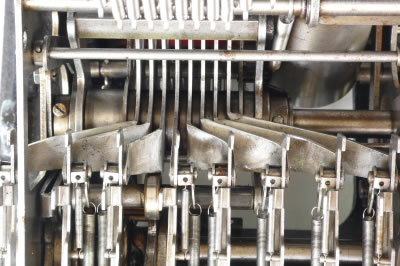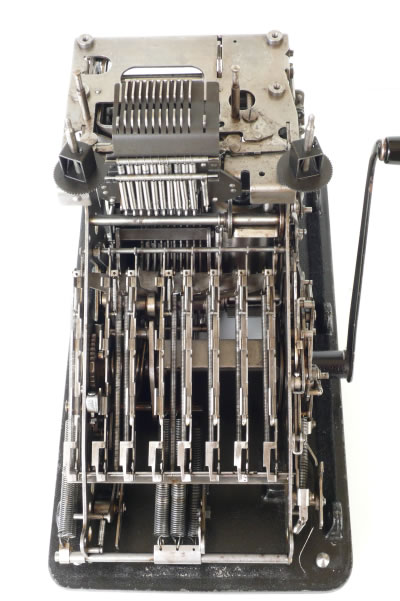
General
During my renovation activities I came / come across mal functions at the various machines. Those are often technology- or manufacturer, electrical or mechanical related. Some commonality strokes me here. In this chapter I will try to explain these in detail for the benefit of other mechanical calculators collectors.
Electrical motor problems (Uncontrolled turning and Radio Interference Circuits)
The machines, with electrical motors, have often "Radio interference circuits" build in. These electrical circuits, prevent radiation of electromagnetic waves, who disturbs the old MW and short wave radio reception and prevent net mains pollution in general. An other function, which is often combined in the same housing, is the spark prevention on the motor on off and speed regulation switches. These sparks are caused by switching off the motor. A motor can be seen as large coil /self inductance. Self inductances generate large voltages, on the switch contacts, when they switched off. Often large enough to bridge small air gaps and sparks occur. To prevent that from happening, a capacitor and a resistor in series, are shunted the switch. The resistor limits the current, when the switch is closed and the capacitor is discharged.
The RFI circuits consists of capacitors, resistors and sometimes coils. The capacitors of both networks are often of the paper film type and have internal degradation after so many years. This has create an virtual resistor in parallel with the capacitor. This resistor, which is lowered by higher temperature, starts to heat up the capacitor and make the internal resistor even smaller. This often does the motor turn slowly. This avalanche heating effect may cause the capacitor to explode, if not quickly turn of the machine from the mains / net. Some times the dielectric, the material intern the capacitor is tar. I had one machine, which was internally completely black, due to this big bang effect.
The solution is to rebuild the circuit by replacing the capacitors with polypropylene types. These are more stable but are difficult to get in the voltages in axial packages. Printed circuit mounted types are more usual these days, but bigger and often not possible to pack in the same location / housing. (See Hamann 300B, Astra 110, Walter SRM-13 machine stories on this web site)
Electrical leakage to ground / earth
The RFI capacitors, I have mentioned above, have capacitors between the mains and earth potential. When these capacitors are degraded their mentioned parallel resistance is caused an current to earth. This switches off the mains safety switch. My suggestion is: Leaf them open or replace those with polyprop ones to when you tend to restore the original circuitry.
Next leakage reason might be motors with brushes. They tend to pollute the surroundings with carbon. This is electrical conductive and caused sometimes leakage currents to the metal cases and earth potential of the net. This will switch the mains off as well.
Cleaning the carbon parts with washing petrol or turpentine is the solution. Soap is possible as well but be aware that sometimes the isolation of the motor wiring is of textile and moisture is getting the problem even worse.
Degeneration of capacitors
I have personal no experience yet of degenerate those capacitors, but highly experienced friends have. When someone has those to, or have procedures like warming up the capacitors or others and know the phenomenon behind, please let me know!!

